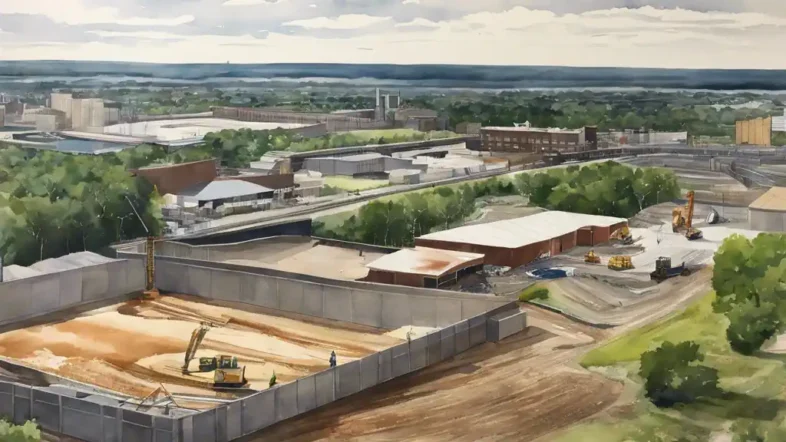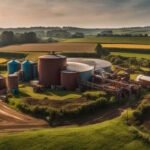Green energy from brownfield developments and food waste is a novel idea for an innovative and extremely sustainable alternative. Read on, and we will explain why.
Key Takeaways
Green energy from brownfield developments and food waste can help solve, or provide, the following:
- Climate Change Urgency: Climate change is a pressing global issue with severe impacts on ecosystems and weather patterns, emphasizing the need for immediate action.
- Fossil Fuel Challenge: Fossil fuels, responsible for 84% of global energy, are a major contributor to greenhouse gas emissions and must be reduced to achieve carbon-neutral energy production.
- Biofuels for Sustainability: Biofuels, derived from organic materials, offer a sustainable alternative, with the potential to meet a significant portion of global energy needs.
- Brownfield Sites as Resources: Brownfield sites, once contaminated, can be remediated for biofuel crop cultivation, making them valuable resources for sustainable energy production.
- Food Waste as Energy: Converting food waste into biofuels not only generates clean energy but also prevents harmful greenhouse gases from entering the atmosphere.
- Collective Effort: While this initiative is significant, it cannot solve the climate crisis alone. But it does require collaboration and active participation from individuals to make a meaningful impact.
- Long-Term Emissions Reduction: By reducing reliance on fossil fuels, utilizing carbon-negative crops, and diverting food waste from landfills, this initiative can contribute to a sustained reduction in greenhouse gas emissions over time.
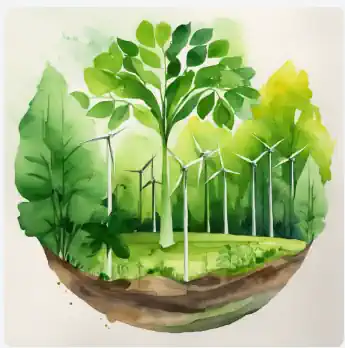 Climate change is an undeniable reality, with severe impacts on ecosystems and weather patterns, affecting coral reefs and bee populations, to name just two of the innumerable negative impacts, and causing extreme weather events like floods and droughts. To combat this global crisis, we must transition away from fossil fuels, a major driver of climate change. This article explores an innovative solution that leverages brownfield sites and food waste to reduce our reliance on fossil fuels, mitigate climate change, and promote sustainability.
Climate change is an undeniable reality, with severe impacts on ecosystems and weather patterns, affecting coral reefs and bee populations, to name just two of the innumerable negative impacts, and causing extreme weather events like floods and droughts. To combat this global crisis, we must transition away from fossil fuels, a major driver of climate change. This article explores an innovative solution that leverages brownfield sites and food waste to reduce our reliance on fossil fuels, mitigate climate change, and promote sustainability.
The Fossil Fuel Dilemma
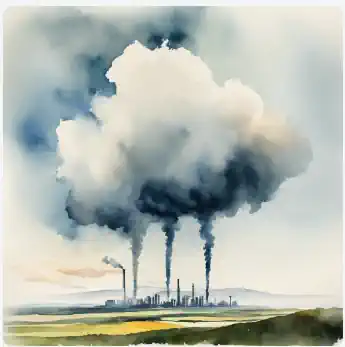 Fossil fuels remain the dominant energy source, contributing significantly to greenhouse gas emissions. Approximately 36 billion metric tons of carbon dioxide (CO2) are released into the atmosphere each year due to fossil fuel combustion, making up 84% of the world’s energy resources. It’s imperative to reduce this market share to achieve carbon-neutral energy production.
Fossil fuels remain the dominant energy source, contributing significantly to greenhouse gas emissions. Approximately 36 billion metric tons of carbon dioxide (CO2) are released into the atmosphere each year due to fossil fuel combustion, making up 84% of the world’s energy resources. It’s imperative to reduce this market share to achieve carbon-neutral energy production.
Biofuels: A Carbon-Neutral Alternative
Biofuels offer promise for carbon-neutral energy production. Biofuels accounted for 70% of global renewable energy in 2017, with agricultural land playing a pivotal role. Utilizing crop residues alone could generate up to 9.4 billion tonnes of biofuel, meeting 14% of global energy needs. To expand biofuel production sustainably, we can turn to brownfield sites and contaminated lands that can be remediated for crop growth.
Unlocking Brownfield Potential – Green Energy from Brownfield Developments
 There are millions of brownfield sites worldwide, totaling over 3.2 million hectares. These sites can be cleaned up using bioremediation or phytoremediation methods, making them suitable for growing biofuel crops like Miscanthus, a highly efficient and versatile energy resource. One hectare of Miscanthus can yield 63 MWh of energy and remove 24.5 tonnes of CO2 annually.
There are millions of brownfield sites worldwide, totaling over 3.2 million hectares. These sites can be cleaned up using bioremediation or phytoremediation methods, making them suitable for growing biofuel crops like Miscanthus, a highly efficient and versatile energy resource. One hectare of Miscanthus can yield 63 MWh of energy and remove 24.5 tonnes of CO2 annually.
Harnessing Food Waste
Food waste presents another opportunity. Approximately 1.9 billion tonnes of food waste are produced annually, contributing to 2.5 billion metric tons of greenhouse gas emissions. By converting food waste into biofuel through cost-effective processes with green energy from brownfield developments, we can generate clean energy while preventing harmful gases from entering the atmosphere. One tonne of food waste can yield 300 kWh of energy.

A Significant Step Towards Sustainability
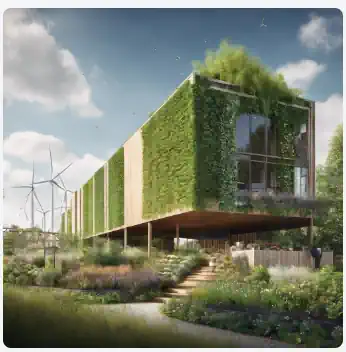 While this initiative alone won’t solve the climate crisis, it can make a substantial impact. By utilizing food waste and brownfield sites, we could produce 771.6 TWh of energy annually, meeting 0.5% of the world’s energy demand. When combined with other clean energy sources, it could significantly reduce fossil fuel consumption. Additionally, the carbon-negative potential of Miscanthus and the reduction of food waste in landfills could contribute to long-term greenhouse gas reduction.
While this initiative alone won’t solve the climate crisis, it can make a substantial impact. By utilizing food waste and brownfield sites, we could produce 771.6 TWh of energy annually, meeting 0.5% of the world’s energy demand. When combined with other clean energy sources, it could significantly reduce fossil fuel consumption. Additionally, the carbon-negative potential of Miscanthus and the reduction of food waste in landfills could contribute to long-term greenhouse gas reduction.
A Collaborative Effort
This initiative empowers individuals to participate actively in climate change mitigation. Recycling food waste and revitalizing contaminated brownfield sites become crucial steps in reducing fossil fuel reliance. Together, we can work towards a greener future where sustainability is everyone’s responsibility, ultimately slowing down the pace of climate change. The future of our planet is in our hands, and supporting green energy from brownfield developments offers a promising path forward.
Conclusion – Green Energy from Brownfield Developments
In response to the pressing issue of climate change, the concept of harnessing green energy from brownfield developments and food waste emerges as a viable, sustainable solution.
 Fossil fuels, responsible for a staggering 84% of the world’s energy production and a substantial contributor to greenhouse gas emissions, represent a critical challenge in the fight against climate change. Transitioning away from fossil fuels is an urgent necessity.
Fossil fuels, responsible for a staggering 84% of the world’s energy production and a substantial contributor to greenhouse gas emissions, represent a critical challenge in the fight against climate change. Transitioning away from fossil fuels is an urgent necessity.
Biofuels offer a promising alternative, constituting a substantial portion of global renewable energy production. By optimizing the use of agricultural land, particularly crop residues, we can substantially reduce our reliance on fossil fuels. Brownfield sites, comprising millions of hectares worldwide, have the potential to play a crucial role in scaling up biofuel production.
These brownfield sites, which were previously contaminated by industrial or commercial activities, can be remediated using environmentally friendly techniques like bioremediation and phytoremediation. This transformation makes them suitable for cultivating biofuel crops, with Miscanthus being a standout candidate due to its impressive energy yield and carbon-negative potential.
Additionally, food waste, a global problem resulting in substantial greenhouse gas emissions, can be harnessed for energy production. Converting food waste into biofuels through cost-effective processes not only generates clean energy but also prevents harmful gases from being released into the atmosphere.

While this initiative alone may not completely solve the complex issue of climate change, it represents a significant step in the right direction. By effectively utilizing food waste and brownfield sites, we can produce 771.6 TWh of energy annually, equivalent to 0.5% of the world’s energy demand. When combined with other clean energy sources, this approach has the potential to substantially reduce our dependence on fossil fuels. Moreover, the carbon-negative capabilities of Miscanthus and the reduction of food waste in landfills contribute to a sustained reduction in greenhouse gas emissions over time.
This initiative underscores the importance of collective action and individual responsibility. Encouraging the recycling of food waste and the transformation of contaminated brownfield sites into sources of clean energy empowers all of us to make a tangible impact on mitigating climate change. Together, we can work towards a more sustainable future, slowing down the pace of this global crisis. The future of our planet is a shared responsibility, and this initiative offers a promising path forward.
Frequently Asked Questions About Green Energy from Brownfield Developments
1. Why is it crucial to reduce our reliance on fossil fuels?
Fossil fuels are the primary source of greenhouse gas emissions, driving climate change. By reducing our reliance on them, we can mitigate the severe environmental impacts and move towards a more sustainable future.
2. What are biofuels, and why are they considered a sustainable alternative?
Biofuels are renewable energy sources derived from organic materials. They are sustainable because they can be produced from sources like crop residues without depleting finite resources like fossil fuels on green energy from brownfield developments style projects.
3. How can brownfield sites contribute to biofuel production?
Brownfield sites, previously contaminated by industrial activities, can be remediated for crop cultivation. By using environmentally friendly methods, we can transform these sites into fertile grounds for biofuel crops like Miscanthus.
4. What is the potential of food waste in generating clean energy?
Food waste, which contributes to significant greenhouse gas emissions, can be converted into biofuels. This process is cost-effective and can yield substantial clean energy while preventing harmful gases from entering the atmosphere.
5. Can initiatives involving green energy from brownfield developments alone solve the climate crisis?
No, this initiative is a significant step in the right direction, but it cannot single-handedly resolve the complex issue of climate change. It must be complemented by other clean energy sources and broader sustainability efforts.
6. How can individuals contribute to this initiative?
Individuals can actively participate by recycling food waste and supporting efforts to rejuvenate contaminated brownfield sites for biofuel production. This collaborative approach empowers everyone to play a role in mitigating climate change.
7. What is the long-term impact of this initiative on greenhouse gas emissions?
By reducing reliance on fossil fuels, utilizing carbon-negative crops like Miscanthus, and diverting food waste from landfills, this initiative can contribute to a sustained reduction in greenhouse gas emissions over time.
Exploring Biogas Examples: Learn How Organic Waste Can Fuel Energy Production
In this article we are exploring biogas examples read on and learn how organic waste can fuel energy. Production Biogas is a type of gas that comes from rotting stuff like leftover food and animal poo. People make it by letting these things break down without any air around. It’s mostly made of two gases […]
Is Methane a Greenhouse Gas? – A Crucial Player in Climate Fight
We answer the question: “Is Methane a Greenhouse Gas?” and we explain why it is a Crucial Player in the fight against climate change. Methane is a greenhouse gas, as we shall discuss, but it is also a major contributor to climate change and a critical opportunity for rapid decarbonization in the fight against runaway […]
The Anaerobic Digestion Process & Dairy Farm Digesters for Manure
The subject of the anaerobic digestion process and dairy farm digesters for manure management might seem a bizarre subject for this website. But this topic, while still new to most people, is about to become a mainstream business for thousands of astute dairy farmers in the US. The fact is that many investors are looking […]
Anaerobic Digester Systems the Best Renewable Transition Technology
Anaerobic Digester Systems: are among the best Renewable Transition Technologies available. Anaerobic digester systems are a green technique to break down organic waste. They achieve this without the need for oxygen, making them far less expensive to maintain and operate than aerobic systems, which require energy-sucking, high-powered oxygenation equipment to function at all. Furthermore, these […]
